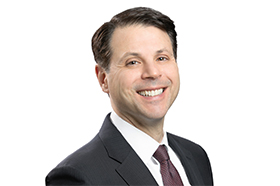Volatile capital markets, changing demographics, technology disruptions and increasing competition to capture investment flows confront many, if not all, of the players in the investment management ecosystem.
Institutional investors, money managers, wealth managers, registered investment advisors, broker dealers and retirement services providers are facing pressures to get bigger as scale efficiencies continue to rise with assets under management. It is no wonder that so many players have embarked on enterprise transformation programs to repurpose themselves for more effective asset capture and service. Yet many transformation programs have experienced mixed results and, at times, have failed to deliver on the promises made at the onset.
We have seen how some investment managers have distinguished their transformation programs from others, reaping benefits where others have not. Our clients’ experiences reveal that successful transformation programs are disciplined in their strategic alignment of goals and execution — we call it “getting the right things right.” This simple slogan is about structuring the transformation portfolio to comprise the “right” set of initiatives, sequenced and managed over the delivery horizon. This is easier said than done.
Get set up for success
“Getting the right things right” begins with including the correct set of initiatives in the transformation portfolio. While the correct set varies from one organization to another, we have seen that most successful programs consist of the following categories of initiatives:
- Stakeholder experiences. The strategic alignment begins with prioritizing key outcomes against the prioritized stakeholders that can affect the outcomes. For investment management firms, common stakeholders include:
- End clients (institutions and/or individuals)
- Intermediary partners, including investment consultants, broker dealers and registered investment advisers
- Regulators, including the SEC, FINRA and the Commodity Futures Trading Commission
- Vendor partners
- Employees
Understanding which and how stakeholders affect the realization of strategic value is a key step in aligning strategy to execution.
- Stakeholder moment-of-truths (MoTs). These include the set of initiatives to map and prioritize the key stakeholder interactions with the firm. Not all interactions are the same. Some clearly matter and differentiate positively for the firm; and just as importantly, some interactions significantly detract from it. The map of these key interactions — good and bad — helps prioritize the firm’s transformation efforts. These initiatives are constantly evolving and include certain focus areas such as environmental, social and governance (ESG).
- Enabling capabilities for MoTs. The next set of initiatives involves the set of capabilities to enable the key MoTs. These initiatives typically involve operating model enhancements, enabling the right combination of people, organization, business and functional processes, and the supporting technologies. Each operating model enhancement must be tied to improving the MoTs as identified previously. For example, the client reporting process can be further enhanced through workflow automation and data management capabilities coupled with the most streamlined organizational model that connects employees across portfolio management, client relationship management, operations, finance and IT. This can at times be difficult as the asset management industry has experienced many mergers, which creates, at times, multiple operating systems that need to be either combined or connected with a bridge to reach optimization.
- Components around risk. Today’s transformation efforts cannot progress without recognizing the impact on the enterprise risk profile of the firm. More often than not, successful programs are designed and implemented in close conjunction with the firm’s enterprise risk program. It’s important to calibrate how the respective initiatives have the appropriate levels and placement of risk controls with respect to transformation changes. Especially noteworthy is the impact on operational risk, which can include risks such as fraud; information security and privacy; cybersecurity; and ESG considerations. A transformation program considers how those risks are addressed individually and also how they can come together. This is a key area the stakeholders have a focus on as many investment managers have not properly prepared for it.
- Key infrastructural components. These include supporting platforms: technology (key system of records applications; workflow management; cloud; data management and analytics; enterprise resource planning and management, etc.), real estate, offshore and outsourced resources. Often, we find the thrust of major transformation programs is simply the deployment of a massive infrastructural capability. While such deployments can be complex, such efforts are not transformational because the other key components are missing. At best, these one-dimensional programs only serve to improve business-as-usual capabilities.
Timing is everything
The other part of “getting the right things right” is sequencing initiatives over the transformation program horizon. This part of the transformation equation is often neglected. It takes significant care and attention to get the sequencing correct. Considerations include:
- Transformation horizon and value realization. Most transformation programs last three to seven years. Often, the horizon is driven by efforts to deploy and implement initiatives. The efforts become an exercise of managing to project budgets and delivery timelines. Some programs have also looked at how value is being derived from initiatives — revenue improvements, realized capital and cost efficiencies, stakeholder experience impacts — in addition to program delivery metrics. Programs that take a comprehensive view of delivery budgets and timelines as well as value realization have a better track record. Having a long-dated plan is important, but short-term projects can also add value. Due to the recent performance of the markets, it has been challenging to obtain financial support for large plans, so it’s important to consider these types of projects.
- Execution sequencing. Most programs sequence initiatives by the interdependencies centered on key infrastructural components. Often these initiatives consume significant time and effort before there is a material improvement to market-facing capabilities. When the sequencing is front-loaded as we often see, the initiatives that make an impact around value realization do not occur until the latter part of the program. This back-loaded value realization can be alleviated by initiatives with short gap solutions to enable more rapid value delivery while the long-term infrastructural components are developed.
- Company engagement. It’s important that various leaders have appropriate transparency in the execution of the relevant initiatives. For example, involve key members of the enterprise risk management function in any process redesign of the sales and marketing process. Their input will be critical in determining if changes to risk controls or regulatory compliance issues could arise from the improved and streamlined business process. We have seen that critical initiatives often have significant cross-functional representation involved in the design and testing of new capabilities. This also creates buy-in for the process and will help from a culture perspective when new training and time commitment is required.
- Governance. The progress of transformation is dynamic, often calling for review and mid-course corrections. Often, organizations will have a Program Management Office comprised of executive sponsors, steering committees, day-to-day leadership and the execution teams. The majority of such programs are resourced with people highly trained in program/project management (PM). Some organizations have deployed a Transformation Management Office — the key difference is the addition of business architects, whose focus is on the integrity of the solutions and impact on value realization. The combination of PM personnel and business architects serves to review both value realization and delivery timeliness, escalating and recommending as necessary the status and mid-course corrections to the steering committee and executive sponsors for ratification.
Reap the benefits
Investment management firms have much to gain by undergoing transformation initiatives that can help them use their assets more effectively and perform services more efficiently. The asset management industry is experiencing a great deal of competition with a focus on fees, technology, ESG and many other topics. Asset management companies need to make sure that they are keeping up with the competition.
Successful transformations are accomplished through disciplined execution of strategy and skillfully sequenced tactics. By “getting the right things right” in the process, firms set themselves up to make the best use of their resources and provide outstanding service.
If your organization is looking to embark or in the midst of a transformation, feel free to contact us. We will be delighted to hear more of your plans, efforts and share any specific insights that may be helpful to you.
Our asset management featured industry insights

No Results Found. Please search again using different keywords and/or filters.

